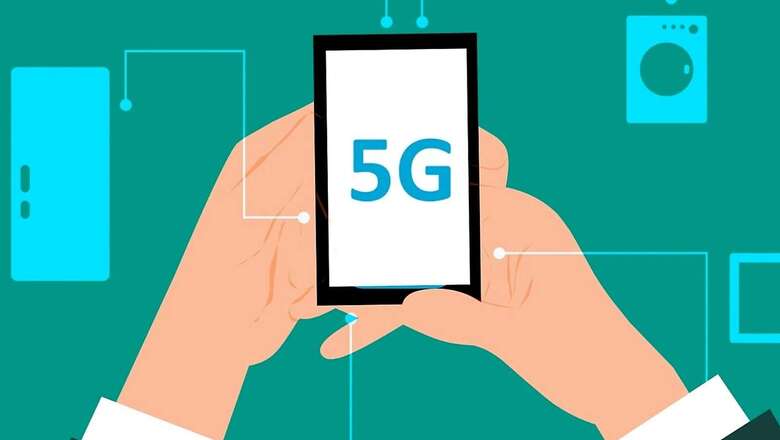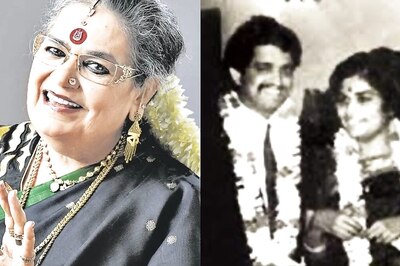
views
India is set to hold its 5G spectrum auctions in the coming weeks, and this has got the country excited about the near future when 5G connectivity will finally become available on handsets in India.
Much has been said about 5G, how it operates compared to a 4G network, and what speeds can users expect from the latest network in the industry. But in a country like India, network congestion has been a recurring issue, which is likely to be solved with the introduction of 5G, as per Sylwia Kechiche, Principal Analyst at Ookla who spoke with S Aadeetya from News18 Tech and gave us a lowdown on the impending 5G spectrum auction and what users can expect from its launch in the country.
Also Read: Twitter Starts Clearout Process, 30 Per Cent Employees From Talent Acquisition Team Laid Off
News18 Tech: There is a lot of excitement around 5G in India. What kind of impact can 5G have on consumers?
Sylwia: When it comes to the 5G network, the speed improves, and the experience and bandwidth will improve. Think about using 5G for streaming high-definition video calling and more. India is at 115th place in the Ookla speed index. But when you think about offering higher speeds, with 5G more than the speeds, what really matters is the latency supported by the network.
News18 Tech: But in countries like India, density is high, which affects the network reach. Does 5G have the solution for this problem?
Sylwia: You have three spectrum bands for 5G that are key for its operations. The low-band 100MHz is on offer at the auction. You have the mid-band (c-band) 2.3MHz, and the high band (mm-wave). When you think of these bands, the low band gives you better coverage, while the high band offers support for more capacity.
But the mid-band is what you call, the sweet spot, which gives you both coverage and capacity. And a large chunk of the c-band spectrum is on offer during the auctions in India. We have looked at other countries in Asia, and what they have done after launching the 5g network and most of them have gone with the C-Band.
There is much work going on in the background to be 5G-ready in India. The main issue right now is that there is not a lot of fibre coverage, instead, the telcos have to rely on base stations to provide the connectivity. But all this will happen gradually. To start off, 5G connectivity will target the urban areas, and then move to the other parts of the country.
News18 Tech: When the switch from 3G to 4G happened, a lot of technological changes happened. How does that go about when moving from 4G to 5G?
Sylwia: The change from 3G and 4G was huge because with 3G you most relied on phones to make calls and send messages. With 4G, you started taking advantage of the faster internet speeds for other applications such as web browsing, video calls and more. So, 5G also comes in different flavours, you have the enhanced mobile broadband which is faster.
Any phone supporting the 5G network can stream a show with fewer delays, which is good for the consumers. But the main use cases of 5G go much beyond these in the field, allowing you to remotely conduct video collaborations and augmented reality to do diagnostics. All these were implemented over the past 2 years in many countries.
You can get real-time monitoring of operations with 5G. For consumers, you can have exclusive cricket content in AR within your living room, all optimised with 5G connectivity for a new experience. All these changes might be a few years away, but this is what 5G promises in the future for everyone.
Also Read: Report Shows 36 Percent Google Pixel Owners Want To Switch To Other Brand
News18 Tech: Would you say that 5G technology for smartphones will deliver better power efficiency than a 4G device.
Sylwia: When we talk about power efficiency, it has mostly to do with the network design, and how the allocated spectrum is utilised. You could also say that the advanced chipset used on the latest smartphones is more power-efficient than before, but the changes are not necessarily because of 5G. There are different elements that give you better management of power. Having said that, compared to 4G, the network design of 5G does have a better potential to conserve energy, even while transmitting high data speeds.
News18 Tech: Will the entry of 5G push previous network technologies (2G/3G) out of the market?
Sylwia: We see different strategies adopted by countries. In markets where we still have a lot of M2M devices running on 2G, they would keep the network running just to phase out the network. However, they would switch off 3G to manage the demand for other networks. Countries like Vietnam are moving the users to 4G just to release some of the spectrum to run the previous 2G and 3G technologies.
Yes, 4G will remain the main network support for a while as 5G rolls out. Choosing the network to shut down and actually shutting them down takes around 18 months, so going by that timeline, older networks will continue to operate as long as you have devices that support them.
The fewer networks telcos have to support, the better they can focus on delivering efficient performance with the network in demand in the market.
Read all the Latest News, Breaking News, watch Top Videos and Live TV here.



















Comments
0 comment